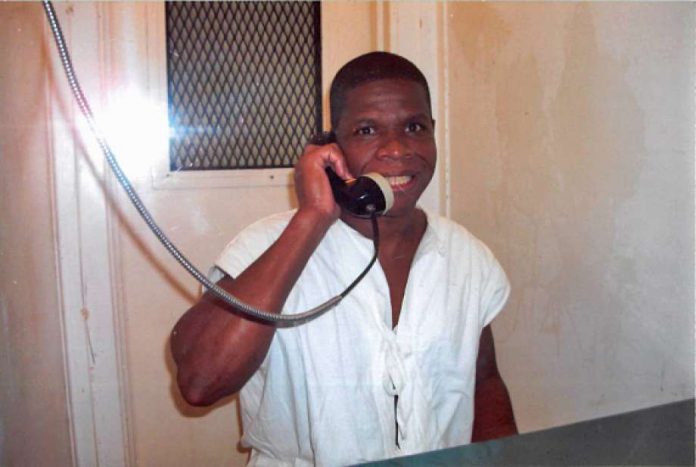
WASHINGTON – The Supreme Court on Wednesday ordered a new sentencing for a Texas death row inmate because of testimony at his trial that he might pose a future threat because he was a black man.
Chief Justice John Roberts cut through a complicated legal background in the case of Duane Buck, and said the introduction of expert testimony that said black men were likely to be more violent in the future unfairly tainted a jury’s decision about whether he should receive life in prison or death.
In a 6 to 2 decision, Roberts said it did not matter that the introduction of the expert testimony was only a small part of the proceedings.
“When a jury hears expert testimony that expressly makes a defendant’s race directly pertinent on the question of life or death, the impact of that evidence cannot be measured simply by how much airtime it received at trial or how many pages it occupies in the record.” Roberts wrote. “Some toxins can be deadly in small doses.”
The two dissenters were Justice Clarence Thomas, the court’s only African-American member, and Justice Samuel Alito.
They said their colleagues were twisting the law to help Buck.
“Having settled on a desired outcome, the court bulldozes procedural obstacles and misapplies settled law to justify it,” Thomas wrote. “But the majority’s focus on providing relief to petitioner in this particular case has at least one upside: Today’s decision has few ramifications, if any, beyond the highly unusual facts presented here.”
Buck, now 53, went to the home of his ex-girlfriend, Debra Gardner, in July 1995 and fatally shot her while her children looked on. He also killed Gardner’s friend Kenneth Butler, and shot his own stepsister, who survived.
Buck was unrepentant when arrested, saying Gardner got what she deserved.
He was quickly convicted. What was contested at the Supreme Court was what happened at the hearing into whether he deserved the death penalty.
To apply the death penalty in Texas, jurors must find a defendant presents a future danger. Buck’s own lawyers called to the stand Walter Quijano, a psychologist who had compiled a report listing race among the factors associated with violent behavior.
Quijano testified he thought Buck was unlikely to commit future violent attacks. But Quijano acknowledged he could “never rule out” the possibility.
Under cross-examination, Quijano suggested that being male and black would make someone more likely to be dangerous in the future. The jury took the report with them before returning to sentence Buck to death.
But Buck’s attempt to argue he deserved a new sentencing hearing because of ineffective counsel hit a wall at the U.S. Court of Appeals for the 5th Circuit, which governs the states of Texas, Louisiana and Mississippi.
A number of procedural mistakes and missed opportunities during the long legal process made it impossible for Buck to raise the ineffective counsel argument, the appeals court ruled.
Roberts said the “extraordinary nature” of the case demanded more. He noted that Texas itself had ordered new sentencings for all the cases in which Quijano provided race-based testimony, except for Buck’s.
“In concluding that the value of finality does not demand that we leave the . . . court’s judgment in place, we do no more than acknowledge what Texas itself recognized 17 years ago,” Roberts wrote.
The case is Buck v. Davis.
(c) 2017, The Washington Post · Robert Barnes

